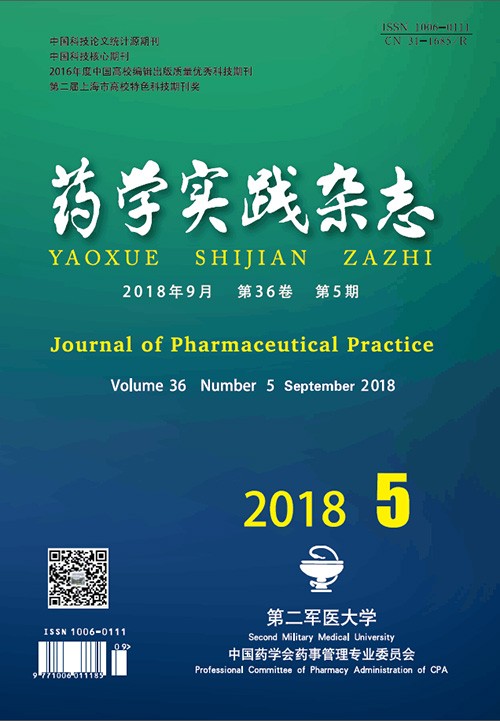|
[1]
|
TONG Y, QUIRION R, SHEN SH. Cloning and characterization of a novel mammalian PP2C isozyme[J]. J Biol Chem, 1998, 273(52):35282-35290. |
|
[2]
|
OGHABI BAKHSHAIESH T, MAJIDZADEH-A K,ESMAEILI R. Wip1:A candidate phosphatase for cancer diagnosis and treatment[J]. DNA Repair(Amst), 2017, 54:63-66. |
|
[3]
|
LU X, AN H, JIN R, et al. PPM1A is a RelA phosphatase with tumor suppressor-like activity[J]. Oncogene, 2014, 33(22):2918-2927. |
|
[4]
|
LIU T, LIU Y, CAO J, et al. ILKAP binding to and dephosphorylating HIF-1α is essential for apoptosis induced by severe hypoxia[J]. Cell Physiol Biochem, 2018, 46(6):2500-2507. |
|
[5]
|
TANG Y, PAN B, ZHOU X, et al. Wip1-dependent modulation of macrophage migration and phagocytosis[J]. Redox Biol, 2017, 13:665-673. |
|
[6]
|
MATHUR A, PANDEY VK, KAKKAR P. PHLPP:a putative cellular target during insulin resistance and type 2 diabetes[J]. J Endocrinol, 2017, 233(3):R185-R198. |
|
[7]
|
LIU G, HU X, SUN B, et al. Phosphatase Wip1 negatively regulates neutrophil development through p38 MAPK-STAT1[J]. Blood, 2013, 121(3):519-529. |
|
[8]
|
YU Y, LI J, WAN Y, et al. GADD45α induction by nickel negatively regulates JNKs/p38 activation via promoting PP2Cα expression[J]. PLoS ONE, 2013, 8(3):e57185. |
|
[9]
|
NEWTON AC, TROTMAN LC. Turning off AKT:PHLPP as a drug target[J]. Annu Rev Pharmacol Toxicol, 2014, 54:537-558. |
|
[10]
|
SUN Y, TIAN H, WANG L. Effects of PTEN on the proliferation and apoptosis of colorectal cancer cells via the phosphoinositol-3-kinase/Akt pathway[J]. Oncol Rep, 2015, 33(4):1828-1836. |
|
[11]
|
GRZECHNIK AT, NEWTON AC. PHLPPing through history:a decade in the life of PHLPP phosphatases[J]. Biochem Soc Trans, 2016, 44(6):1675-1682. |
|
[12]
|
NITSCHE C, EDDERKAOUI M, MOORE RM, et al. The phosphatase PHLPP1 regulates Akt2, promotes pancreatic cancer cell death, and inhibits tumor formation[J]. Gastroenterology, 2012, 142(2):377-387. |
|
[13]
|
HWANG SM, FEIGENSON M, BEGUN DL, et al. Phlpp inhibitors block pain and cartilage degradation associated with osteoarthritis[J]. J Orth Res, 2018, 36(5):1487-1497. |
|
[14]
|
QIN Y, MENG L, FU Y, et al. SNORA74B gene silencing inhibits gallbladder cancer cells by inducing PHLPP and suppressing Akt/mTOR signaling[J]. Oncotarget, 2017, 8(12):19980-19996. |
|
[15]
|
JANG SW, YANG SJ, SRINIVASAN S, et al. Akt phosphorylates Mstl and prevents its proteolytic activation, blocking FOXO3 phosphorylation and nuclear translocation[J]. J Biol Chem, 2007, 282(42):30836-30844. |
|
[16]
|
QIAO M, WANG Y, XU X, et al. Mst1 is an interacting protein that mediates PHLPPs' induced apoptosis[J]. Mol Cell, 2010, 38(4):512-523. |
|
[17]
|
KARIN M. Nuclear factor-kappaB in cancer development and progression[J]. Nature, 2006, 441(7092):431-436. |
|
[18]
|
RINKENBAUGH AL, BALDWIN AS. The NF-κB pathway and cancer stem cells[J]. Cells, 2016, 5(2):E12. |
|
[19]
|
CHRISTIAN F, SMITH EL, CARMODY RJ. The Regulation of NF-κB Subunits by Phosphorylation[J]. Cells, 2016, 5(1):12. |
|
[20]
|
SUN W, YU Y, DOTTI G, et al. PPM1A and PPM1B act as IKKbeta phosphatases to terminate TNFα-induced IKKbeta-NF-kappaB activation[J]. Cell Signal, 2009, 21(1):95-102. |
|
[21]
|
AGARWAL NK, ZHU X, GAGEA M, et al. PHLPP2 suppresses the NF-κB pathway by inactivating IKKβ kinase[J]. Oncotarget, 2014, 5(3):815-823. |
|
[22]
|
MIN J, ZASLAVSKY A, FEDELE G, et al. An oncogene-tumor suppressor cascade drives metastatic prostate cancer by coordinately activating Ras and nuclear factor-kappaB[J]. Nat Med, 2010, 16(3):286-294. |
|
[23]
|
CHEN LF, GREENE WC. Shaping the nuclear action of NF-kappaB[J]. Nat Rev Mol Cell Biol, 2004, 5(5):392-401. |
|
[24]
|
LIU L, DAI Y, CHEN J, et al. Maelstrom promotes hepatocellular carcinoma metastasis by inducing epithelial-mesenchymal transition by way of Akt/GSK -3β/snail signaling[J]. Hepatology, 2014, 59(2):531-543. |
|
[25]
|
SHEN XF, ZHAO Y, JIANG JP, et al. Phosphatase Wip1 in immunity:an overview and update[J]. Front Immunol, 2017, 8:8. |
|
[26]
|
LOWE JM, CHA H, YANG Q, et al. Nuclear factor-kappaB(NF-kappaB) is a novel positive transcriptional regulator of the oncogenic Wip1 phosphatase[J]. J Biol Chem, 2010, 285(8):5249-5257. |
|
[27]
|
LIN X, DUAN X, LIANG YY, et al. PPM1A functions as a Smad phosphatase to terminate TGFβ signaling[J]. Cell, 2016, 165(2):498. |
|
[28]
|
DAI F, SHEN T, LI Z, et al. PPM1A dephosphorylates RanBP3 to enable efficient nuclear export of Smad2 and Smad3[J]. EMBO Rep, 2011, 12(11):1175-1181. |
|
[29]
|
WANG L, WANG X, CHEN J, et al. Activation of protein serine/threonine phosphatase PP2Cα efficiently prevents liver fibrosis[J]. PLoS ONE, 2010, 5(12):e14230. |
|
[30]
|
MIYAZONO K. Transforming growth factor-beta signaling in epithelial-mesenchymal transition and progression of cancer[J]. Phys Biol Sci, 2009, 85(8):314-323. |
|
[31]
|
GENG J, FAN J, OUYANG Q, et al. Loss of PPM1A expression enhances invasion and the epithelial-to-mesenchymal transition in bladder cancer by activating the TGF-β/Smad signaling pathway[J]. Oncotarget, 2014, 5(14):5700-5711. |
|
[32]
|
FURGASON JM, BAHASSI el M. Targeting DNA repair mechanisms in cancer[J]. Pharmacol Ther, 2013, 137(3):298-308. |
|
[33]
|
LEEM J, KIM JS, OH JS. WIPL phosphatase suppresses the DNA damage response during G2/prophase arrest in mouse oocytes[J]. Biol Reprod, 2018(Epub). |
|
[34]
|
JAISWAL H, BENADA J, MVLLERS E, et al. ATM/Wip1 activities at chromatin control Plk1 re-activation to determine G2 checkpoint duration[J]. EMBO J, 2017, 36(14):2161-2176. |
|
[35]
|
WANG ZP, TIAN Y, LIN J. Role of wild-type p53-induced phosphatase 1 in cancer[J]. Oncol Lett, 2017, 14(4):3893-3898. |
|
[36]
|
OLIVA-TRASTOY M, BERTHONAUD V, CHEVALIER A, et al. The Wip1 phosphatase (PPM1D) antagonizes activation of the Chk2 tumour suppressor kinase[J]. Oncogene, 2006, 26(10):1449-1458. |
|
[37]
|
SLUSS HK, ARMATA H, GALLANT J, et al. Phosphorylation of serine 18 regulates distinct p53 functions in mice[J]. Mol Cell Biol, 2004, 24(3):976-984. |
|
[38]
|
GOLOUDINA AR, KOCHETKOVA EY, POSPELOVA TV, et al. Wip1 phosphatase:between p53 and MAPK kinases pathways[J]. Oncotarget, 2016, 7(21):31563-31571. |







 DownLoad:
DownLoad: